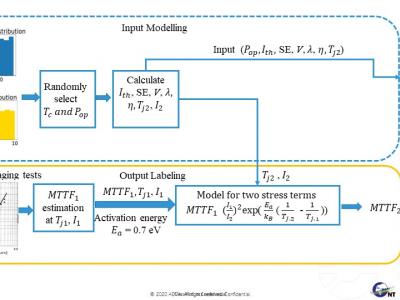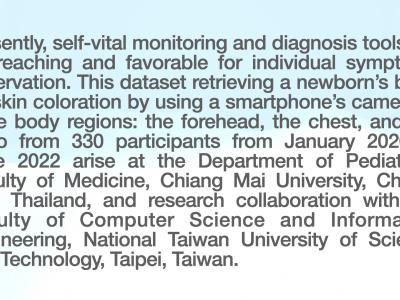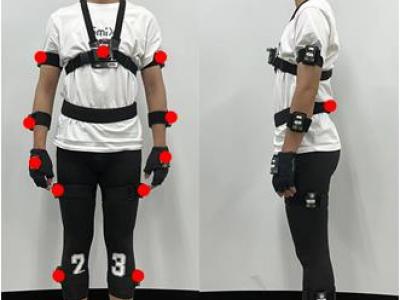*.csv
The dataset was collected by performing uplink/downlink throughput measurements in Munich, Germany. The user side device was a vehicle with roof-mounted antenna (approx. 1.5 m height), and on the network side was a base station antenna mounted at the top of a building (height of the antenna with respect to the ground: 21 m). The measurements were collected at the center frequency of 3.41 GHz, with 40 MHz of bandwidth, with antenna gain of 15.5dBi (5dBi) at the base station (vehicle) side. The maximum throughput in the uplink was 40 Mbps.
- Categories:
 704 Views
704 ViewsA synthetic data for low power (P ≤10 mW) InGaAsP MQW-DFB lasers operating at a wavelength (λ) ranging from 1.53 to 1.57 µm at a case temperature laying between -40 ℃ to 85 ℃ with side mode suppression ratio of more than 35 dB is generated and can be used for laser lifetime prediction using machine learning based approaches.
- Categories:
 229 Views
229 ViewsThe dataset includes processed sequences of optical time domain reflectometry (OTDR) traces incorporating different types of fiber faults namely fiber cut, fiber eavesdropping (fiber tapping), dirty connector and bad splice. The dataset can be used for developping ML-based approaches for optical fiber fault detection, localization, idenification, and characterization.
- Categories:
 4646 Views
4646 Views
The dataset contains the data collected using an Arduino Nano 33 BLE Sense for several classification tasks: color detection, keyword spotting, sound frequency recognition, vibration pattern detection, hand-gesture recognition, and vibration intensity detection.
- Categories:
 343 Views
343 Views
# Student Test Results Prediction based on Learning Behavior: Learning Beyond Tests
Dataset Part A: The Goal is to predict Test Results, in the form of averaged correctness, averaged timespent in the test, based only on the learning history (learning behavior records)
Dataset Part B: The objective is to predict the last test results, points and scores, based on the learning behavior records and the first test results.
# About the dataset
The raw data is provided by ALIN.ai where a large number of students participated in math learning and tests, online.
- Categories:
 1426 Views
1426 Views
This dataset includes real-world Channel Quality Indicator (CQI) values from UEs connected to real commercial LTE networks in Greece. Channel Quality Indicator (CQI) is a metric posted by the UEs to the base station (BS). It is linked with the allocation of the UE’s modulation and coding schemes and ranges from 0 to 15 in values. This is from no to 64 QAM modulation, from zero to 0.93 code rate, from zero to 5.6 bits per symbol, from less than 1.25 to 20.31 SINR (dB) and from zero to 3840 Transport Block Size bits.
- Categories:
 1929 Views
1929 ViewsHuman activity data based on wearable sensors, such as the Inertial Measurement Unit (IMU), have been widely used in human activity recognition. However, most publicly available datasets only collected data from few body parts and the type of data collected is relatively homogeneous. Activity data from local body parts is challenging for recognizing specific activities or complex activities. Hence, we create a new HAR dataset which is colledted from the project named MPJA HAD: A Multi-Position Joint Angles Dataset for Human Activity Recognition Using Wearable Sensors.
- Categories:
 1670 Views
1670 Views




